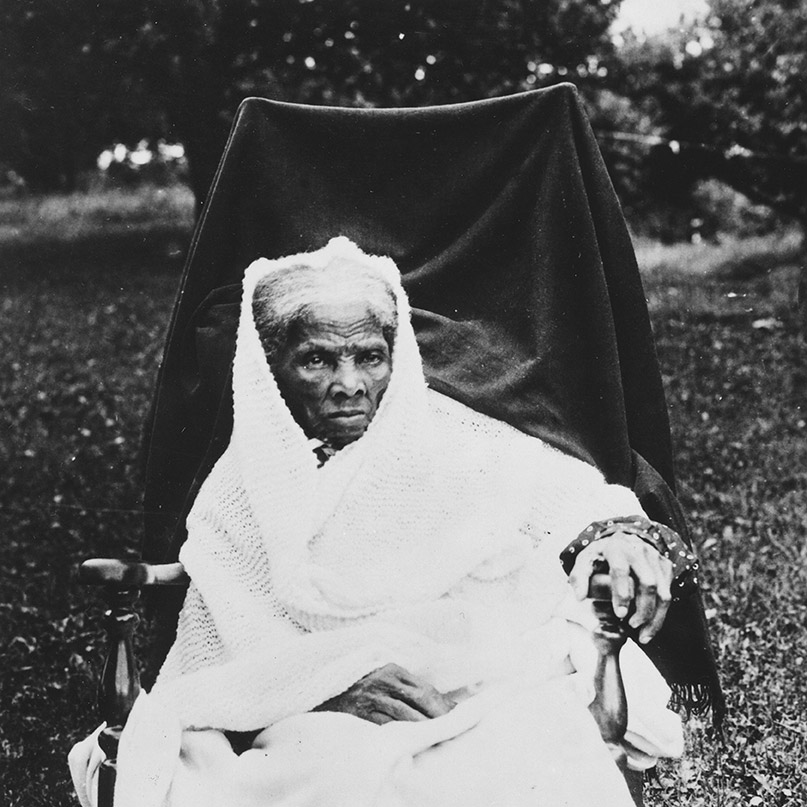A Courageous Journey
Discover the fascinating story of Harriet Tubman, the most famous conductor of the Underground Railroad. Find out how she guided enslaved people to freedom in the small Canadian town of St. Catharines.
THE MOSES OF HER PEOPLE
Born on a Maryland plantation around 1820, Harriet Tubman escaped slavery to become a leading abolitionist and the most famous conductor of the Underground Railroad. Known as “the Moses of her People,” she guided thousands of enslaved African Americans along the dangerous route to freedom in Canada.

Fugitive State Law
In 1849, Tubman escaped slavery and fled to Philadelphia. She began leading a series of trips, guiding dozens of escaped slaves to freedom in the free Northern states. In 1850, with the passage of the Fugitive State Law which led to the abduction of former slaves and free blacks living in free states, Tubman re-routed the Underground Railroad to Canada, where slavery had been abolished in 1834. Tubman established her base of operations in nearby St. Catharines, Canada West, or present-day Ontario.
1820-1822: Harriet Tubman is born
Harriet Tubman was born Araminta “Minty” Ross to enslaved parents on a plantation in Maryland. Her exact birthdate is unknown.
1844: Harriet Tubman marries John Tubman
In 1844, at the age of 25, Tubman married John Tubman, a free African American. Tubman adopted her husband’s last name and her mother’s first name, changing her name to Harriet Tubman. She and her husband separated years later when he refused to join her escape.
Sept. 17, 1849: Escape
After their enslaver died, Tubman and her siblings decided to escape the plantation and head to Pennsylvania. Tubman’s brothers feared being punished for escaping and turned back. Tubman arrived safely in Philadelphia.
1850-1860: Tubman and the Underground Railroad
After her escape, Tubman vowed to return to the plantation and bring her family and friends to freedom. For the next 10 years, she made more than a dozen trips to Maryland to free enslaved people via the Underground Railroad.
Dec. 1851: Harriet Tubman guides eleven slave fugitives to Canada
When Congress passed the Fugitive Slave Act of 1850, which allowed authorities in non-slave states to capture and return escaped slaves to their owners, Tubman helped reroute the Underground Railroad to Canada.
1869-1890: Life after the Railroad
Tubman spent her remaining years in Auburn, New York, tending to her family and other people in need. She married Nelson Davis, a civil war veteran, and the two eventually adopted a baby girl. Tubman became more involved in the women’s suffrage movement of the 1890s.
Mar. 10, 1913: Harriet Tubman Dies
Before her death, Tubman underwent brain surgery because of the head injuries she sustained early in her life. She was buried with military rites in Fort Hill Cemetery, a short drive from the home she gave to the Methodist Episcopal Zion Church.
Black History at Niagara Parks
Whirlpool Bridge Plaza is the site where Harriet Tubman and her companions travelled over the Whirlpool Suspension Bridge in 1856, crossing the Niagara River, on their way to freedom in Canada. Today, commemorative panels stand at the entrance of White Water Walk honouring Tubman’s heroic efforts.
But that’s just one important stop along the Black History trail at Niagara Parks. Discover some of Canada’s most poignant stories of freedom and courage along the Niagara Parkway with our interactive map!
